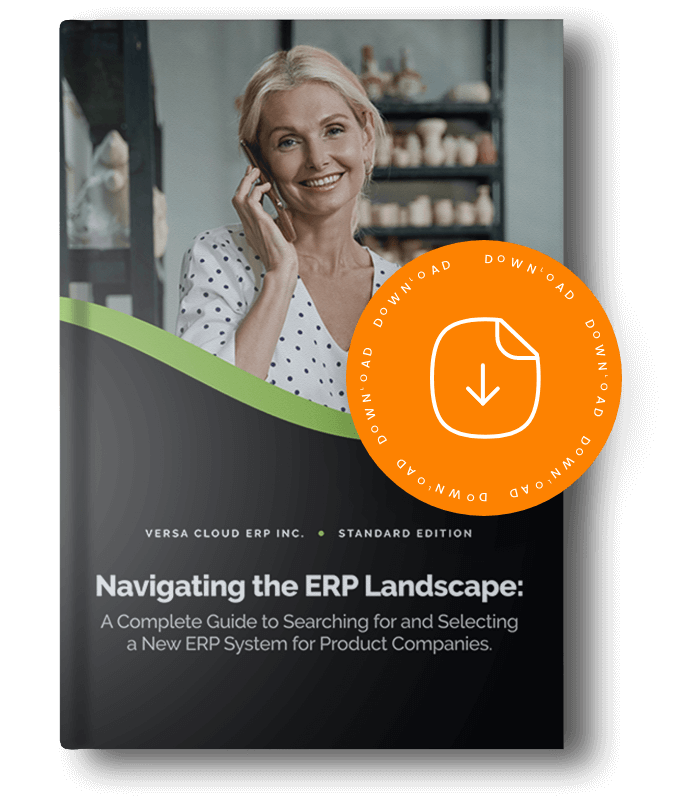Running an eCommerce should be simple. Only it’s not. You are running the gauntlet of a complicated & moving ecosystem. You’ve got inventory to manage, orders to process, payments to deal with, customers to satisfy, and to top it off you’re just trying to keep up with your cash flow. Perhaps even more importantly – you’re (hopefully) also keeping track of your business’s finances.
But one area that often gets left off the to-do list is your eCommerce store’s relationship with your accounting solution.
If you don’t have a fast and fluid exchange of data between your store and accounting solution, then the hidden cost of disconnection could be greater than you think. The financial implications don’t just stop at inefficiency. You can impact your accuracy, efficiency, and ultimately growth.
In this, we’re going to take a closer look at the costs of disconnection. We will dissect why your accounting software must be in sync with your eCommerce store, what happens when there is no sync (i.e. the disconnect too many businesses experience), and how an ecosystem that is fully powered by seamless integration can allow you to reclaim your valuable time, money, and sanity.
Defining Sync: The Process of Combining The Sales And Finance Platforms
To clarify the actual process of syncing the data between commerce and accounting platforms, we will start with the definition of syncing. Syncing is simply creating an automated real-time stream of data when you make a sale from your online store (for example, Shopify, WooCommerce, Magento, BigCommerce) to your accounting platform (for example: Xero and NetSuite).
Now that the platforms are synced any time a sale, return, refund, calculation of tax, etc. happen all of this data will transfer to both platforms at the exact same instant for free, without the need to re-enter information manually, or do a bulk upload.
Benefits of syncing include:
- Instant recording of transactions without manual input
- Automated invoice and receipt generation
- Accurate and real-time tax calculations
- Consistent and up-to-date inventory data across platforms
This automation reduces errors, cuts down tedious administrative tasks, and provides you with up-to-the-minute financial insights.
Recognizing the Gap: What Happens When e-commerce & Accounting are Not Together
Now let’s examine a situation more closely where your e-commerce and accounting systems don’t talk to one another.
In the absence of integrated systems, it is normal to resort to manual steps – downloading the sales reports from the eCommerce platform and re-entering into accounting software or physically changing the inventory counts in the eCommerce platform. These steps take time and run a high risk for human error.
The disconnection creates several operational blind spots:
- Data discrepancies: Sales numbers recorded in your eCommerce platform may not match the figures in your accounting software, leading to confusion.
- Delayed reporting: Financial reports reflect outdated information, causing slow or incorrect decision-making.
- Inventory chaos: Inventory quantities get misaligned between platforms, increasing the risk of overselling or stockouts.
- Tax complications: Sales tax collection and remittance become error-prone, increasing the risk of compliance issues.
- Increased manual labor: Teams end up duplicating efforts, wasting time on reconciliation and error correction rather than strategic tasks.
This lack of communication can be overwhelming, especially as your order volume grows. It leads to frustration, inefficiencies, and costly mistakes that chip away at your bottom line.
The Financial Pitfalls You Might Not See
1. Manual Data Entry Errors
When data isn’t synced automatically, every sale or refund requires manual entry into your accounting system. This is a recipe for mistakes. For example, an invoice number typed incorrectly or a sales transaction missed can throw your entire financial picture off balance.
Such errors can result in:
- Inaccurate financial statements: Mistakes can inflate or deflate your revenue and expenses.
- Incorrect profit calculations: Without accurate data, it’s impossible to know how much money you’re truly making.
- Audit risks: Mistakes might trigger red flags during audits, leading to penalties or extended review periods.
2. Delayed Cash Flow Visibility
When your accounting system is not real-time, you will also have a delay in invoice generation and payment tracking. This delay will susequently slow your understanding of cash flow and challenge your ability to manage expenses, make supplier and other payments or invest in growth opportunities.
3. Inventory Misvaluation
Without syncing, inventory numbers quickly become inaccurate. This can lead to selling items that aren’t in stock, disappointing customers and causing refund headaches. It also makes calculating your Cost of Goods Sold (COGS) difficult, skewing your profit margins and tax reports.
4. Tax Penalties and Compliance Risks
Sales tax compliance can be challenging because different locations have various rates and rules. Non-synced systems can mean incomplete or inaccurate tax data, increasing your chances of fines and penalties. For sellers who sell across state or county lines, the risk increases quickly.
Mini Case Example: Consider a mid-sized apparel company that used WooCommerce for sales but didn’t sync with their accounting software. During quarterly reconciliation, they uncovered a $17,000 discrepancy caused by unrecorded customer returns and refunds. The team spent over 40 hours correcting the data and delaying important investor reports. This scenario is a clear example of how unsynced systems silently eat into business efficiency and trust.
How Workflow Bottlenecks Hurt Your eCommerce Business
1. Wasted Time on Manual Tasks
Without integration, teams spend hours each week manually entering data, cross-checking reports, and fixing errors. This time could be better spent on strategy, marketing, or customer service.
2. Lengthy Month-End Closings
At month-end, finance teams scramble to match sales reports with bank statements and invoices. The reconciliation process turns into a bottleneck that delays closing books, producing reports, and sharing insights with leadership.
3. Lack of Real-Time Visibility
If the performance of your financial data is dependent on batch updates or manual updates, your leaders are using yesterday’s information to make decisions. This is too late to respond to market trends, stock shortages, or cash flow scenarios.
4. Burnout and Human Error
Repetitive, manual work not only tires out your team but also increases the likelihood of mistakes—especially during busy seasons when accuracy is most crucial.
The Ripple Effect on Business Strategy and Growth
1. Poor Decision-Making
Business decisions based on incomplete or delayed financial data are risky. This leads to guesswork rather than data-driven strategy, which can result in lost opportunities and misallocated resources.
2. Limited Scalability
Manual workflows may work for a small operation but quickly become untenable as order volume grows. Without automation, you’ll find yourself hiring more people to keep up rather than improving efficiency.
3. Missed Expansion Opportunities
Businesses that can’t trust their financial data hesitate to expand—whether launching new sales channels, entering new markets, or applying for loans. Inaccurate data reduces confidence and slows growth.
4. Reduced Investor Confidence
Investors and stakeholders expect real-time visibility into your financial health. Disconnected systems and inaccurate reports signal poor business management, reducing your chances of securing funding.
Unlocking Efficiency: How Syncing Fixes These Issues
Integrating your eCommerce platform with your accounting software can be a game changer.
Key Benefits:
- Data Sync in Real Time: Transactions, refunds, and payments appear in your accounting system the moment they occur with your accounting software.
- Automated Reconciliation: Invoices and receipts automatically match up to your sale records without lifting a finger.
- Accurate Tax Calculations: Updated taxes will lower compliance risks providing peace of mind and accuracy.
- Consistent Inventory Control: Live inventory updates keep you from overselling and running out of stock.
- Operational Improvement: Move your team away from transactional work and free them to pursue growth-oriented activities.
Popular integration pairs include Shopify + QuickBooks, WooCommerce + Xero, and BigCommerce + NetSuite, among others. Many integration tools today offer plug-and-play setups that require minimal technical skills.
Key Indicators That It’s Time to Connect Your Systems
Ask yourself:
- Are you still using spreadsheets for financial reporting?
- Does bookkeeping take multiple days each month?
- Do your sales numbers differ across platforms?
- Do you sell on multiple channels?
- Does your accountant constantly need to correct your books?
- Is tax season always stressful?
If you answered yes to any of these, your business is likely paying hidden costs from not syncing your systems.
Finding the Best Sync Solution for Your Business Needs
When choosing an integration solution, keep these factors in mind:
- Platform Compatibility: Ensure it supports your eCommerce and accounting tools.
- Real-Time Sync: Avoid batch uploads that delay updates.
- Ease of Setup: Look for user-friendly tools with strong support.
- Inventory and Tax Handling: Pick solutions that manage COGS and tax compliance well.
- Scalability: The tool should grow with your business.
- Reliable Support: Access to responsive customer service is crucial.
Tips for a Hassle-Free and Successful Integration
- Audit your current processes and data flow.
- Define what you want from the integration (speed, automation, visibility).
- Consult your finance and operations teams before deciding.
- Pilot the integration on a small scale before full rollout.
- Train your team on new workflows.
- Regularly monitor integration health and data accuracy.
Wrapping Up: Why Syncing Your Systems Is a Must
The hidden costs of not syncing your eCommerce platform with your accounting software go far beyond the inconvenience of manual data entry.They affect your financial accuracy, operational efficiency, and business growth potential.
Integrating these systems gets rid of errors, frees up time, gives you current information, and allows you to make smarter scale decisions. Waiting until you have a costly reconciliation or audit situation to get it integrated is a risky decision. A current investment in integration gives you clarity, reduces stress, and leaves you room to plan for the future.
Take the First Step Towards Transformation
Ready to uncover hidden savings and streamline your operations? Start by auditing your current setup or exploring integration tools compatible with your eCommerce and accounting platforms. Download our free checklist, “Is Your eCommerce Business Financially Synced?”, to take your first step toward smarter, faster growth.
Let Versa Cloud ERP do the heavy lifting for you.
Do Business on the Move!
Make your businesses hassle-free and cut the heavyweights sign up for the Versa Cloud ERP today!!
Join our Versa Community and be Future-ready with us.









